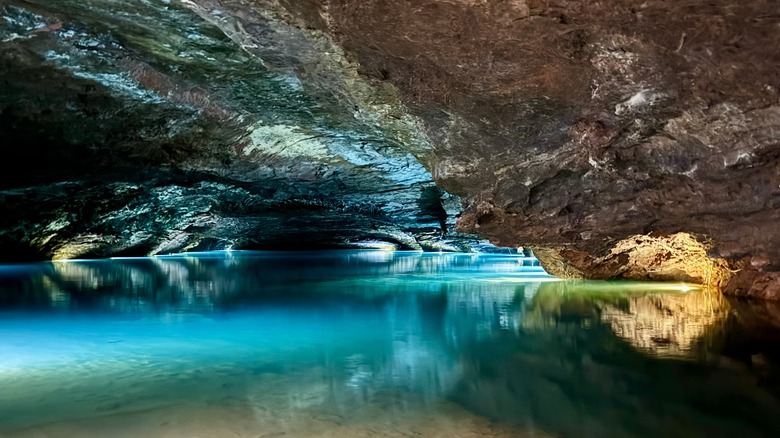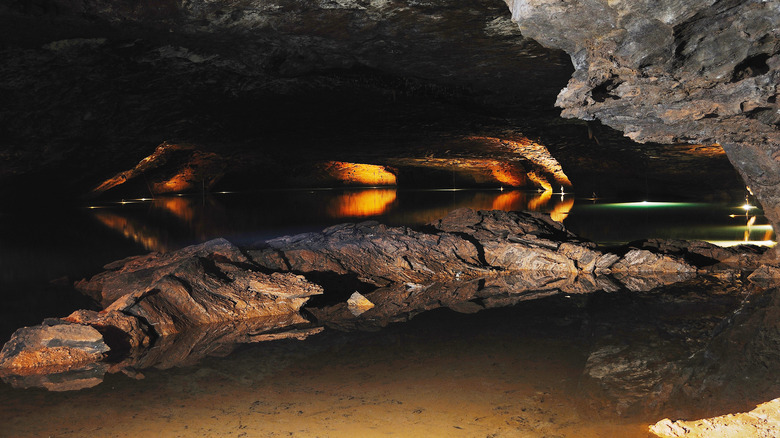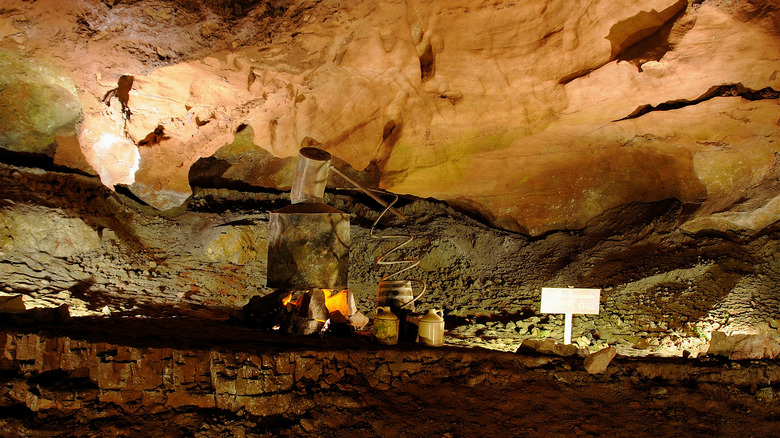Explore The US' Largest Underground Lake On This Bucket List Glass-Bottom Boat Adventure
When you think of Tennessee, you likely picture the Great Smoky Mountains or catch a tune from the notable music scene. East to west, there is much to see in the long, rectangular state, from the understated Blue Hole Falls, one of America's many gorgeous waterfalls, to its whiskey, barbecue, zoos, the Grand Ole Opry, Elvis's Graceland, and Dolly Parton's Dollywood. Tennessee simply delivers on southern charm and natural wonders.
One such wonder is called The Lost Sea, and it's located in Sweetwater, Tennessee, just about an hour outside Knoxville. Resting in the shadows of the Great Smoky Mountains to the east, The Lost Sea offers a one-of-a-kind opportunity to explore an underground world of water and an encounter that might compare to some of the most unique experiences worth traveling to in the Caribbean. However, listed by the Guinness Book of World Records as the largest underground lake in America, this wonder sits much closer to home.
The history of The Lost Sea
The Lost Sea is unique for a variety of reasons. The first is that it is an underground cavern system that leads to the massive lake 140 feet below ground. Visitors will pass through tunnels and rooms within the cavern while guides explain what's known about the history of the location. Different types of formations have developed along the walls and ceiling as the centuries have passed. Remote parts of the caves feature rare anthodites, which are more commonly known as "cave flowers." The fact that they thrive in this environment earned the location the designation of a Registered National Landmark by the U.S. Department of the Interior.
In addition to its geological relevance, The Lost Sea provides insight into the history of the region. The discovery of Cherokee artifacts like projectile points, jewelry, and pottery supports the belief that these caves were used as a native gathering place. This tracks, considering The Lost Sea is part of the vast Craighead Caverns systems, named after the Cherokee Chief Craighead, who owned the land in the 1800s.
It's also known that settlers used the caves for food storage and that Confederate soldiers mined saltpeter for use in making gunpowder. Going back even further, the caverns provide evidence of a misguided jaguar that wandered into the cave 20,000 years ago.
A visit to The Lost Sea
As a tourist attraction that draws around 150,000 visitors annually, it's likely you won't incur huge crowds here. Although during peak times you may find up to 2,000 visitors on a single day. The good news is that the caves maintain a steady temperature of 58 degrees year-round. If you take Samantha Brown's advice to visit Nashville in May, head over to The Lost Sea while you're in the state. Similarly, though, you can escape to the cool caves during the sweltering summer months or schedule a visit during the winter with the same expectations. The caves are open every day except Thanksgiving and Christmas.
Once inside, you'll traverse a path until you reach the water. From there, visitors are loaded into an electric boat that carries them on a tour of the exposed surface of the lake, which measures about 800 feet long by about 200 feet wide. The water is around 75 feet deep and expands over 4.5 acres. Looking into the water, you'll likely catch a glimpse of the many huge stocked rainbow trout in the water.
There are gift shops open seasonally, as well as a general store, ice cream parlor, mock gem mine, and a glassblower. You can also explore a self-guided, ⅓-mile nature trail on the premises.


